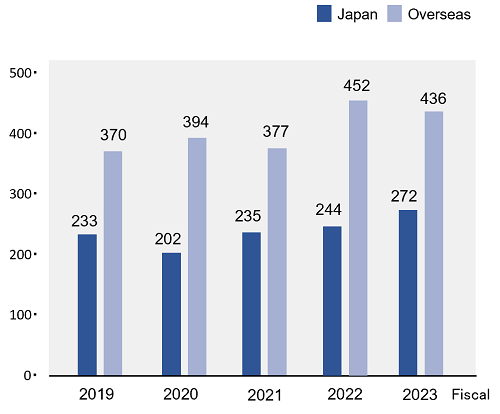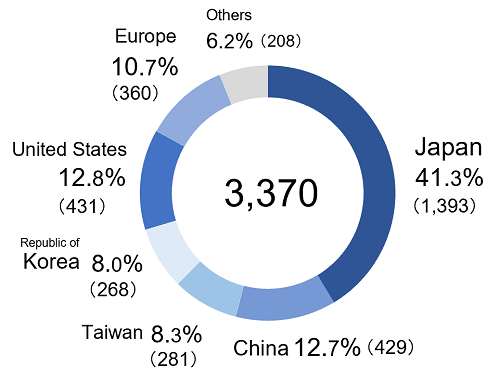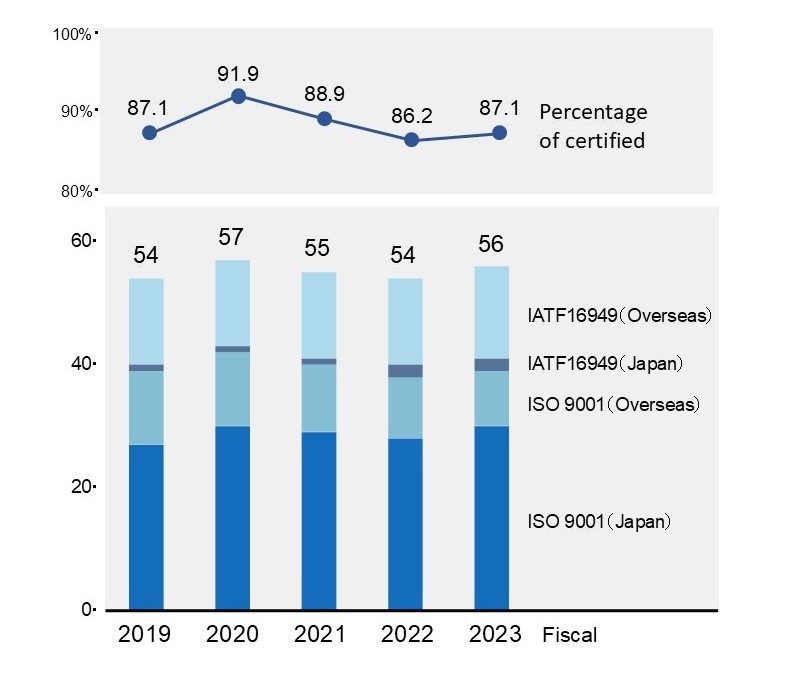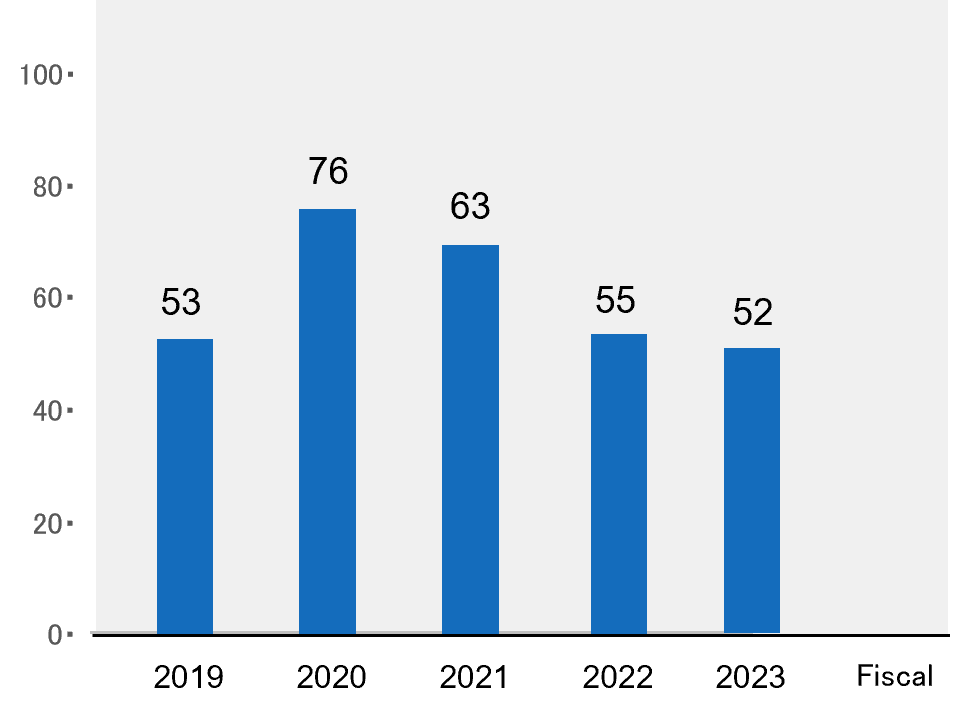Social
Employees
Breakdown of consolidated employees by employment status and employment contract type
(as of the end of FY2023)
* Since the calculation method is different from the one for temporary employees stated in the annual securities report, the total number of employees is not in accord.
Breakdown of consolidated employees by employment contract(as of the end of FY2023)
New employee hires by region(as of the end of FY2023)
* Since the calculation method is different from the one for consolidated employees, the total number of employees is not in accord.
Employee turnover by region(as of the end of FY2023)
* Since the calculation method is different from the one for consolidated employees, the total number of employees is not in accord. Departures includes “retirement at the age limit” and “expiration of contract period”.
Breakdown of consolidated employees by position
(as of the end of FY2023)
Percentage of managers holding local nationality in overseas sites(as of the end of FY2023)
Proportion of women as a percentage of new hires
Proportion of women as a percentage of total employees
Number of emloyees in management positions* by gender
*At Mitsui Kinzoku, "employees in management positions"are defined as those at the "section manager level" or above. For affiliated companies, the definition is based on each company's own criteria.
Proportion of women in management positions
Wage gap between male and female workers
*Calculated based on provisions in the Act on the Promotion of Women’s Active Engagement in Professional Life.
*Female workers are paid less than male workers, which is attributable principally to the smaller percentage of women in management positions and to the average length of service of women being shorter than that of men (by about seven years).
Average years of employment by gender
Percentage of employees with disabilities
*Revised the values for previous years.
Rate of taking paid leave
Overtime hours(Hours/month per employee)
Parental leave
* Employees that took advantage: Employees that took parental leave in the relevant fiscal year of those entitled.
Return to work and retention rates after parental leave
* Ended: Employees whose parental leave ended.
Returned: Employees that returned to work after ended.
Retired: Employees that separated from employment in twelve months after returning.
Results of stress check(Percentage of high stress)
* Target : Directly hired employees of Mitsui Kinzoku and
the domestic consolidated subsidiaries, including expatriate workers)
Human Rights
Number of attendees in human rights training
*Human rights training at overseas sites scheduled for FY2020 and FY2021 was postponed due to COVID-19
*A systematic review of human rights training has been underway since FY2023, and the new training program has been conducted since FY2024.
Health and Safety
Number of accidents
*1 Directly hired employees on a global consolidated basis.
*2 Revised the classification of not requiring days off in previous years.
Number of attendees in safety training
*1 The number of attendees of safety trainings held at the head office of Mitsui Kinzoku, including attendees from Mitsui Kinzoku and domestic and overseas consolidated subsidiaries.
*2 Not including those held at sites.
*3 We combined rank-based safety training and safety training from FY2022.
Community Engagement
Mitsui Kinzoku Group breakdown of the amount

Changes in Amount (Millions of yen)
Intellectual Property
Number of patent applications

* Prior year reported figures updated as appropriate to reflect retrospective patent paperwork procedures and patent transfers.
Number of patents registered globally

* Numbers as of the end of March 2024.
Quality Management
Number of operating sites with certifications

Number of claims at sites that hold QA meetings

* The values expressed as relative values, with the data of FY2013 being 100.